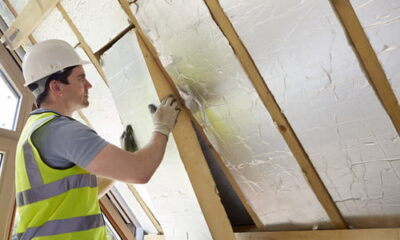There has been a fundamental change in the way we view the environment. Whilst a minority of people, businesses, and institutions have been paving ways to create positive ecological change for some time, it is only in recent years that this has become a common goal amongst a wider collective consciousness. This clear paradigm shift is, of course, a step in the right direction. However, there are still many facets of our lifestyles that go overlooked when it comes to being ecofriendly. Interestingly, one of the most common of these oversights is a product that can be found in almost every home across the globe: our flooring.
For the less informed amongst you, it may be difficult to see why making the change to ecofriendly flooring ranks so highly on the list of priorities. But the fact is, some flooring manufacturers still rely heavily on highly toxic chemicals, volatile organic compounds, and non-sustainable materials in the construction of their products. As flooring is set to remain in high demand on a worldwide scale, it is imperative that these procedures are amended and replaced with respectful and green methods of production.
Thankfully, many companies are beginning to see the importance of ecofriendly flooring solutions, and are adapting accordingly. Additionally, there are a myriad of tried and tested flooring materials that boast lower environmental impact than their alternatives.
If you’re looking for a green choice of flooring for your home but aren’t sure where to start, then don’t worry. Here are 3 ecofriendly flooring solutions for you to consider during your next renovation project.
Engineered Wood Flooring
Wood has remained a popular choice of flooring for generations, excelling in both residential and commercial settings alike. Traditionally, solid wood flooring is milled from a single piece of hardwood timber to preserve the aesthetic of each board. Whilst most wood flooring manufacturers do look towards more sustainable sources in the creation of their products, the fact remains that this method of production uses a surprising amount of wood. In this regard, engineered wood is a more environmentally friendly choice. Engineered flooring serves as a unique take on classic hardwood, utilizing a core of multiple layers of compressed timber for structural support. This core is covered by a surface lamella of real wood, making each board indistinguishable from their solid counterparts. Not only does this solution use less wood, it also allows left over wood and pulp to be repurposed for use in the plank itself. Consequently, less waste is created during the manufacturing process. Remember, in order to guarantee that your engineered wood supplier adheres to the most environmentally respectful regulations, always check for an FSC badge when making your purchase.
Bamboo
Engineered wood flooring is undoubtedly an ecofriendly choice. However, it still relies upon slow growing hardwood in the creation of each board. For those who are looking for a greater reduction of wood use, bamboo is an excellent alternative. Although bamboo retains many of the desirable qualities held by hardwood flooring, it is in fact a species of grass. As a result, bamboo is quick to regenerate once harvested, reaching maturity after an average of 5 years. Unlike hardwood, bamboo’s grass roots are self-generating, meaning that the crop does not need replanting after use. To prevent deforestation, the cutting of bamboo is rotated, allowing for a safe annual harvest.
PET Carpet
Like wood flooring, carpets are one of the most favored flooring solutions available. The similarities, however, end there. Whilst solid wood boards are almost always composed entirely of natural materials, carpets offer a concoction of artificial fibers and chemicals. When we think about carpet, we tend to picture the prototypical image of deep wool pile. But the truth is, modern carpets are often constructed from a mixture of non-recyclable plastics and VOCs, making them an environmental hazard. Thankfully, some brands are opting for PET carpets as an ecofriendly alternative. Utilizing plastic from recycled bottles, PET carpets are 100% clean, 100% recyclable, and 100% environmentally safe. PET fibers are also naturally stain resistant, removing the necessity for added protective chemicals. In short, this new type of sustainable carpeting is an ecologically progressive choice with minimal drawbacks and a lot to offer.
Potential title: 3 Efficient And EcoFriendly Flooring Solutions For Your Home
Tagline: Remodeling your home? Looking to make your house more green? Consider trying these excellent ecofriendly flooring solutions.


 Environment10 months ago
Environment10 months agoAre Polymer Banknotes: an Eco-Friendly Trend or a Groundswell?

 Environment12 months ago
Environment12 months agoEco-Friendly Home Improvements: Top 7 Upgrades for 2025

 Features9 months ago
Features9 months agoEco-Friendly Cryptocurrencies: Sustainable Investment Choices

 Features10 months ago
Features10 months agoEco-Friendly Crypto Traders Must Find the Right Exchange






























